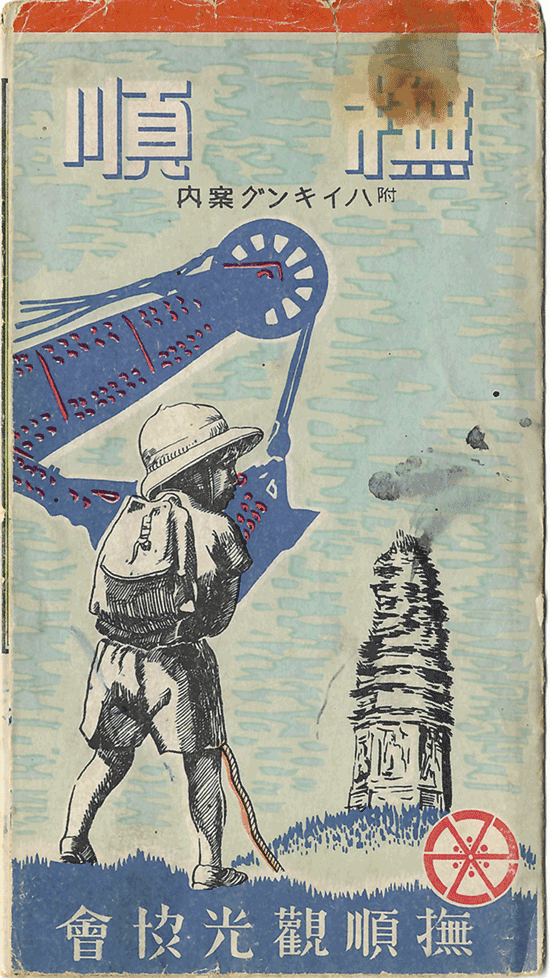Seeing Sites of Extraction
 The spectacle of the open-pit mine as an engineering feat serves as an entry point into the array of technologies that Japanese technocrats introduced to turn this site of resource potential into one of resource production. On the cover of the sightseeing society’s pamphlet is a picture of a young boy, explorer’s hat on head, knapsack on back, and hiking stick in hand. Two other objects are featured: an old pagoda and a steam shovel. If the former represented the past, the latter was a symbol of the present and the future and of the transformative power of technology to remake the landscape. The site of extraction was captivating not only because of its scale but also because of the technological assemblage that made it possible.
The spectacle of the open-pit mine as an engineering feat serves as an entry point into the array of technologies that Japanese technocrats introduced to turn this site of resource potential into one of resource production. On the cover of the sightseeing society’s pamphlet is a picture of a young boy, explorer’s hat on head, knapsack on back, and hiking stick in hand. Two other objects are featured: an old pagoda and a steam shovel. If the former represented the past, the latter was a symbol of the present and the future and of the transformative power of technology to remake the landscape. The site of extraction was captivating not only because of its scale but also because of the technological assemblage that made it possible.
What tends to be rendered nearly invisible in images of the mine, though, are the tens of thousands of workers whose labor sustained the system of carbon technocracy. Their bodies would be subjected to a number of technologies of control, from fingerprinting to calorie counting, turning them into sites of extraction too.
And this was a point that I thought needed to be made because the site’s tens of thousands of workers, whose labor sustained this system of carbon extraction, were often rendered nearly invisible in images of the mine. Under this light, the picture postcards, which mostly foreground bulky equipment, new installations, and the immense open pit, reveal a particular technocratic fiction of an energy regime driven by fossil-fuel-powered machines rather than human exertion, even as the landscape is drastically altered in its productivist pursuits.
Problematic as that perspective may be, we should not turn our eyes away from such sights of extraction. While it is no longer be fashionable for people to mail each other postcards of mines, they are still very much worth looking at. In many societies today, it is easy to plug in devices, flick on switches, and otherwise use energy without regard for where exactly it comes from, its “abode of production,” to paraphrase Marx, “hidden.”
By focusing on sights of extraction past and present, we gain insights into how our world is made. Writing in 1937, George Orwell, the visionary of the industrial age, contended: “In the metabolism of the Western world [and one may easily argue beyond] the coal-miner is second in importance only to the man who ploughs the soil. He is a sort of caryatid upon whose shoulders nearly everything that is not grimy is supported. For this reason, the actual process by which coal is extracted is well worth watching, if you get the chance and are willing to take the trouble.” I could not agree more.
But I would add that paying close attention to sights of extraction also helps us cultivate a deeper appreciation for the massive human and environment costs of energy extractivism. In so doing, we may be further moved to action as we bear witness to the unmaking of our world.
| « The Spectacle of the Open Pit |
